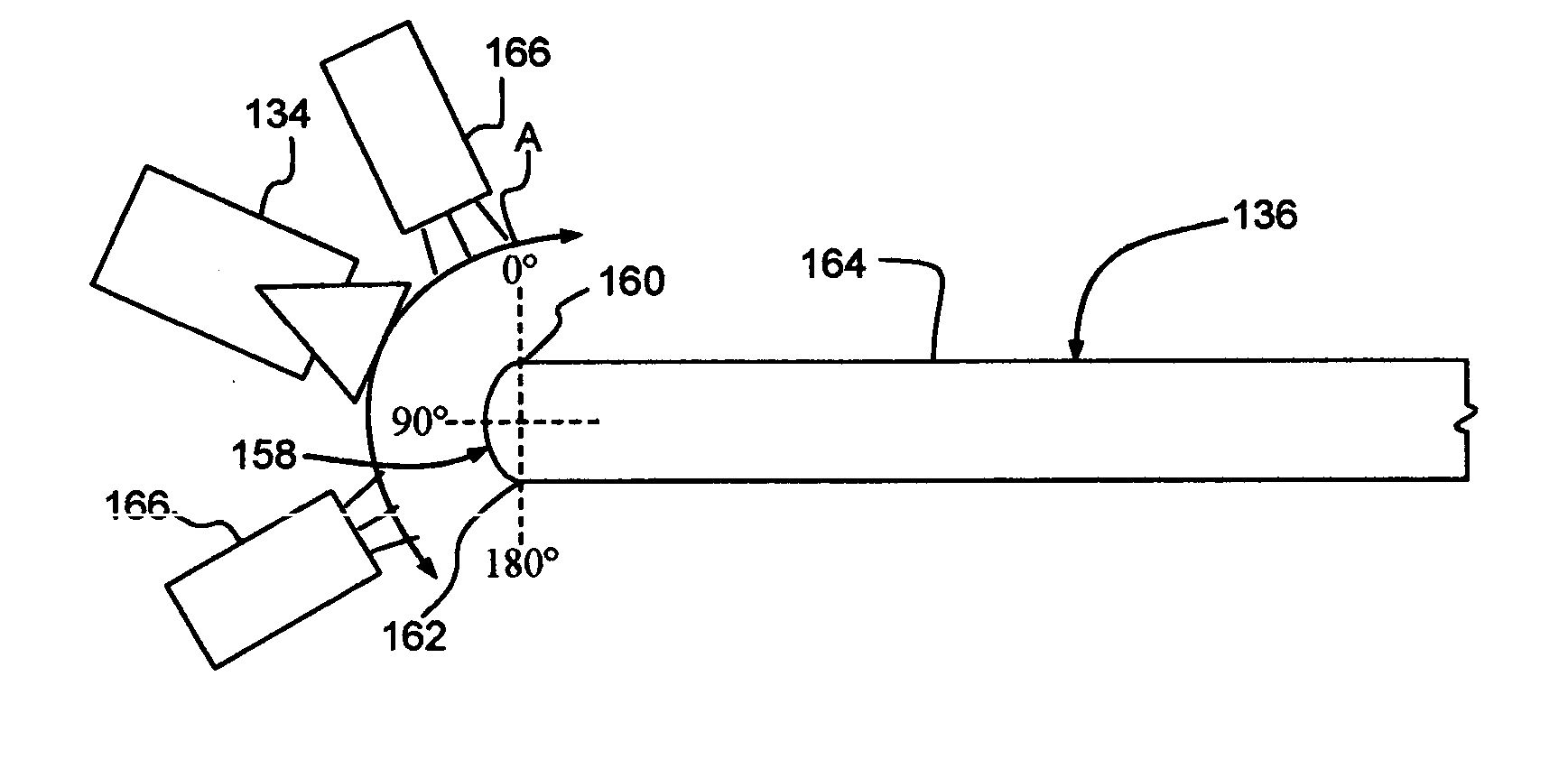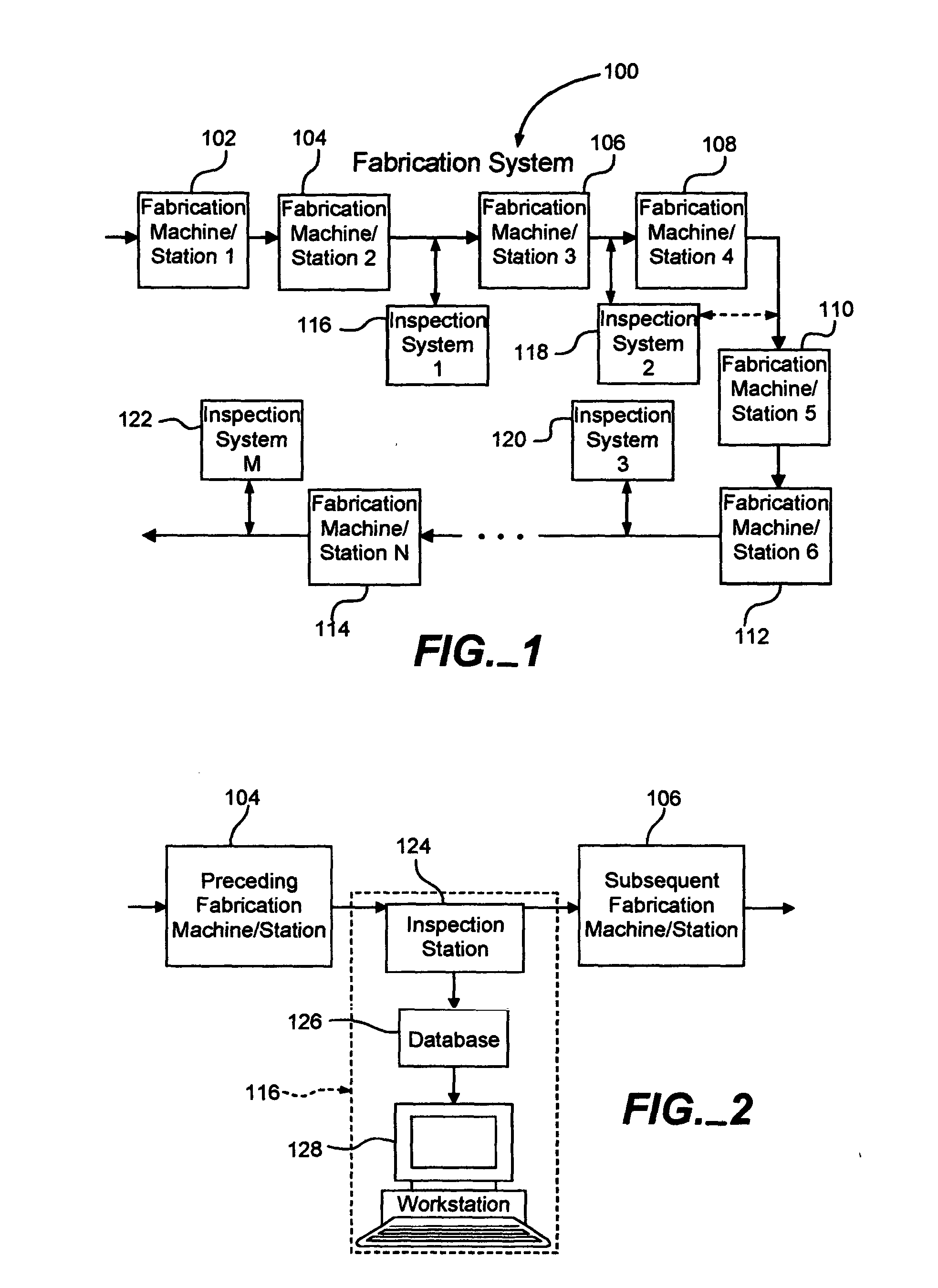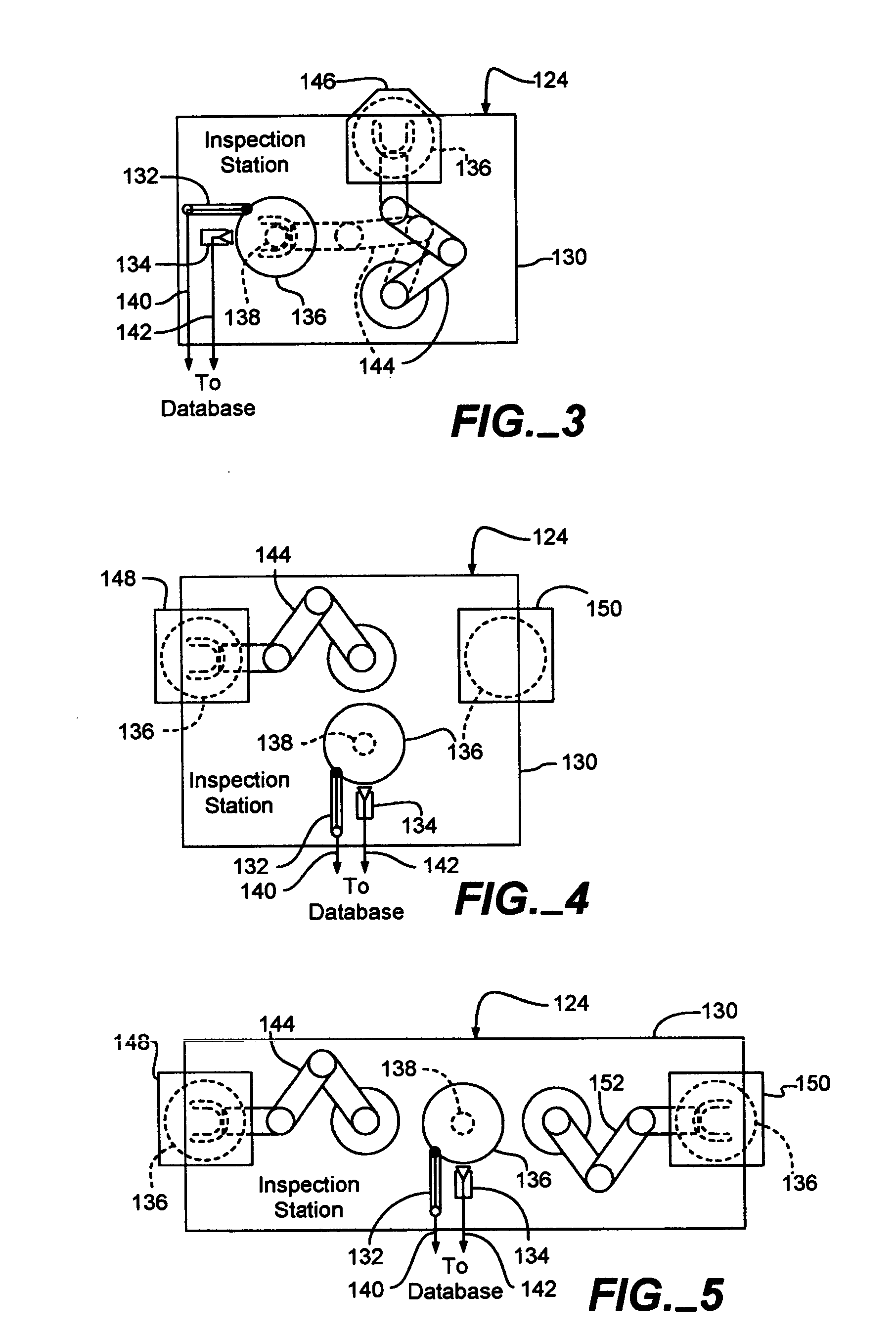Wafer edge defect inspection
a defect inspection and wafer edge technology, applied in the field of wafer defect inspection, can solve problems such as cracks in the wafer edge, large problems, and the possibility of propagation of cracks in the wafer to the interior of the wafer, and achieve the effect of greater consideration
- Summary
- Abstract
- Description
- Claims
- Application Information
AI Technical Summary
Benefits of technology
Problems solved by technology
Method used
Image
Examples
Embodiment Construction
[0019] An exemplary fabrication system 100 that fabricates integrated circuits (IC's) (not shown) on semiconductor wafers (not shown) is shown in FIG. 1. The fabrication system 100 includes several conventional fabrication machines, or stations, 102-114, such as metal deposition devices, ion implantation devices, epitaxial growth chambers, ovens, spin-on-glass devices, etc. Thus, the fabrication stations 102-114 perform various conventional process steps in a specific processing order on the wafers in order to fabricate the IC's. The fabrication system 100 also includes inspection systems 116-122. Each inspection system 116-122 is interposed between two fabrication stations 102-114 to intercept one or more or all of the wafers passing between the fabrication stations 102-114 for inspection purposes. Each inspection system 116, 118, 120 and 122 corresponds to the fabrication station 104, 106, 112 and 114, respectively, that immediately precedes it in the processing order. The inspect...
PUM
 Login to View More
Login to View More Abstract
Description
Claims
Application Information
 Login to View More
Login to View More - R&D
- Intellectual Property
- Life Sciences
- Materials
- Tech Scout
- Unparalleled Data Quality
- Higher Quality Content
- 60% Fewer Hallucinations
Browse by: Latest US Patents, China's latest patents, Technical Efficacy Thesaurus, Application Domain, Technology Topic, Popular Technical Reports.
© 2025 PatSnap. All rights reserved.Legal|Privacy policy|Modern Slavery Act Transparency Statement|Sitemap|About US| Contact US: help@patsnap.com



